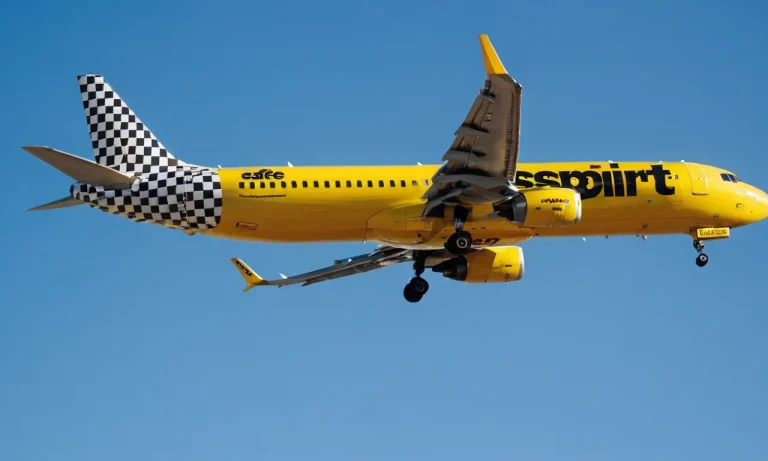Why Is Uber Taking So Long To Find A Ride In 2023?
In major cities across the US, Uber riders have been experiencing longer wait times and surge pricing when trying to book a ride. If you’ve opened the app only to be told there are no drivers available, you’re not alone.
If you’re short on time, here’s the quick answer: Increased demand combined with a driver shortage due to high gas prices, lower earnings, and competition from delivery gigs means riders are waiting longer for Uber rides and paying more in 2023.
In this comprehensive guide, we’ll dig into all the factors contributing to longer Uber pickup times and higher fares, provide tips for securing a quick ride, and discuss what the future may hold for Uber amid rising inflation and economic uncertainty.
Surging Demand and Decreasing Supply
One of the main reasons why Uber is taking so long to find a ride in 2023 is due to the surging demand and decreasing supply in the market. This imbalance between the number of riders and available drivers has resulted in longer wait times for passengers.
Ridership Rebounding After Pandemic Lows
As the world recovers from the impact of the COVID-19 pandemic, ridership on Uber has been steadily rebounding. With more people returning to work, going out for social activities, and traveling, the demand for rideshare services has increased significantly.
This surge in demand has put pressure on Uber’s driver network to meet the growing needs of passengers.
According to recent reports, the number of Uber trips has reached pre-pandemic levels in many cities. For example, in New York City, ridership has already surpassed the levels seen in 2019. This rapid rebound in ridership has caught Uber off guard, leading to longer wait times for passengers.
Driver Shortages Persist Across Many Markets
While the demand for rides has increased, Uber has been facing persistent driver shortages across many markets. Several factors have contributed to this ongoing issue. Firstly, some drivers have chosen not to return to the platform due to health concerns or career changes brought on by the pandemic.
Secondly, the increased demand for delivery services has drawn some drivers away from passenger pickups.
In addition to these factors, there is a growing competition in the gig economy with other rideshare and delivery platforms. Many drivers have opted to work for multiple platforms to maximize their earnings, which has resulted in a decreased supply of available drivers for Uber.
Uber has been actively trying to address the driver shortage issue by implementing various incentives and bonuses to attract and retain drivers. However, it takes time for these efforts to translate into a significant increase in the number of available drivers.
It is important to note that the surging demand and decreasing supply issue is not unique to Uber. Other rideshare companies are also facing similar challenges in meeting the increased demand for rides.
As the economy continues to recover and people rely more on rideshare services, it is expected that the industry as a whole will find ways to adapt and overcome these challenges.
Rising Costs and Lower Earnings
One of the main reasons why Uber is taking so long to find a ride in 2023 is the combination of rising costs and lower earnings for drivers. These factors have created a challenging environment for both drivers and passengers.
Impact of High Gas Prices
High gas prices have significantly impacted the profitability of Uber drivers. With the cost of fuel increasing, drivers have to spend more on gas, which eats into their earnings. This means that drivers need to take on more rides or spend longer hours on the road to make the same amount of money they used to make.
According to a study conducted by RideGuru, the average fuel cost for an Uber driver has increased by 20% compared to previous years. This increase in expenses has resulted in drivers having to work longer hours or switch to other sources of income to compensate for the rising costs.
Furthermore, high gas prices can also deter potential drivers from joining Uber. The prospect of spending a significant portion of their earnings on fuel can discourage individuals from becoming drivers, leading to a decreased supply of available rides.
Falling Take-Home Pay
Another factor contributing to Uber’s longer wait times is the falling take-home pay for drivers. While Uber has implemented changes to its pricing structure in recent years, drivers have reported earning less money per ride.
This decrease in earnings has a direct impact on driver motivation and availability.
According to a survey conducted by Uber Driver Diaries, 60% of drivers reported a decline in their monthly income compared to previous years. This downward trend in earnings has made it more difficult for drivers to sustain their livelihood solely through driving for Uber.
As a result, some drivers have chosen to reduce their availability or leave the platform altogether.
Moreover, the decrease in take-home pay has also affected driver satisfaction and morale. When drivers feel undervalued and underpaid, they may be less motivated to provide efficient and timely service, leading to longer wait times for passengers.
Competition from Delivery and Other Gigs
In recent years, the gig economy has exploded with various delivery services and other gig work options. This increase in competition has had a significant impact on the availability of rides on Uber. With more people opting for flexible work options, there is a larger pool of drivers to choose from, which can lead to longer wait times for passengers.
Companies like DoorDash, Instacart, and Postmates have gained popularity, offering flexible earning opportunities for individuals. Many drivers who used to exclusively work for ride-sharing services like Uber have now diversified their income by taking up delivery gigs.
This has resulted in a decrease in the number of available drivers specifically dedicated to providing rides on Uber.
In addition to delivery services, there are also other gig work options that have become more appealing to drivers. Platforms like TaskRabbit, Handy, and Upwork offer a wide range of gig opportunities, from home repairs to freelance writing.
As more people explore these options, the pool of available drivers for ride-sharing decreases further.
Furthermore, the COVID-19 pandemic has also impacted the availability of rides on Uber. Many drivers had to stop working during lockdowns, and even after restrictions were lifted, some drivers chose not to return due to health concerns or finding other employment opportunities.
This decrease in the number of active drivers has contributed to longer wait times for passengers.
It is worth noting that Uber has been actively addressing this issue by implementing various strategies to attract and retain drivers. They have introduced incentives and bonuses to encourage drivers to prioritize ride requests over other gig opportunities.
Additionally, they have expanded their services to include delivery options, allowing drivers to earn money through both ride-sharing and deliveries.
Tips for Finding an Uber Faster
Be Flexible on Pickup Location
One of the main reasons why it may take longer to find an Uber in 2023 is due to increased demand and limited supply of drivers. To increase your chances of finding a ride faster, be flexible with your pickup location.
Consider walking a few blocks away from crowded areas or busy streets to find a less congested pickup spot. This can save you time and increase your chances of getting an Uber sooner.
Avoid Peak Times
Peak times, such as rush hour or weekends, are when the demand for Uber rides is at its highest. During these times, it can be more difficult to find an available driver, resulting in longer wait times. To avoid this, try to plan your rides outside of peak hours.
If you have the flexibility, schedule your rides during off-peak times to increase your chances of finding an Uber faster.
Consider UberXL or Comfort
In 2023, Uber introduced new ride options such as UberXL or Comfort to cater to different passenger needs. These options provide larger vehicles or more comfortable rides, respectively. If you’re having trouble finding a regular Uber, consider selecting one of these options.
While they may be slightly more expensive, they often have more available drivers and can potentially shorten your wait time.
Remember, these tips may not guarantee an immediate Uber ride, but they can increase your chances of finding one faster. Additionally, keep in mind that external factors such as traffic and weather conditions can also impact your wait time.
By being flexible, avoiding peak times, and considering alternative ride options, you can improve your overall experience with Uber in 2023.
The Future of Uber Amid Uncertainty
Uber, the ride-sharing giant, has revolutionized the transportation industry since its inception. However, in recent years, users have been experiencing longer wait times to find a ride. This has left many wondering why Uber is taking so long to find a ride in 2023.
Let’s explore the future of Uber and the factors contributing to the current uncertainty.
Increased Demand and Limited Supply
One of the main reasons for the longer wait times is the increased demand for Uber rides. As cities grow and populations continue to urbanize, more people are relying on ride-sharing services for their transportation needs.
With a surge in demand, it becomes challenging for Uber to keep up with the rising number of ride requests.
Moreover, the limited supply of drivers is another factor contributing to the longer wait times. Some drivers may choose to work fewer hours or switch to other ride-sharing platforms, causing a shortage in available drivers.
This imbalance between supply and demand leads to delays in finding a ride, especially during peak hours or in areas with high demand.
Regulatory Challenges
Uber has faced numerous regulatory challenges in many cities around the world. Local governments have imposed stricter regulations on ride-sharing services, including licensing requirements and background checks for drivers.
While these regulations aim to ensure passenger safety, they can also create hurdles for Uber and its drivers. The compliance process can be time-consuming, leading to delays in onboarding new drivers and expanding the driver pool.
Additionally, the ongoing legal battles and uncertainty surrounding the classification of drivers as independent contractors or employees have further complicated the situation. Such legal disputes can impact the availability of drivers and ultimately affect the overall efficiency of the Uber platform.
Technological Upgrades
In order to address the challenges it faces, Uber is investing in technological upgrades. The company is continuously working on improving its algorithms to optimize driver allocation based on demand patterns.
By leveraging data analytics and machine learning, Uber aims to reduce wait times and match riders with available drivers more efficiently.
Furthermore, Uber is exploring innovative solutions such as autonomous vehicles to overcome the limitations caused by the shortage of human drivers. While self-driving cars are still in the testing phase, they hold the potential to revolutionize the ride-sharing industry and provide a more seamless experience for riders.
Conclusion
With ridership rebounding but drivers still in short supply, Uber waits and surge pricing are likely to persist in 2023. Riders hoping to secure a quick, affordable ride will need to remain flexible by adjusting pickup locations and times.
Meanwhile, Uber aims to lure back drivers with incentives and fare hikes while facing economic challenges of its own. Stay tuned for further developments.








